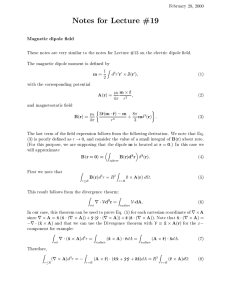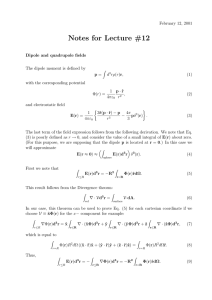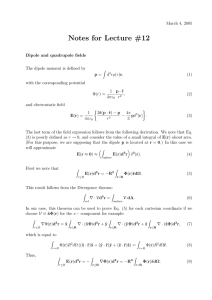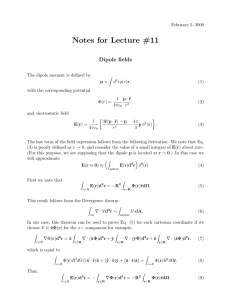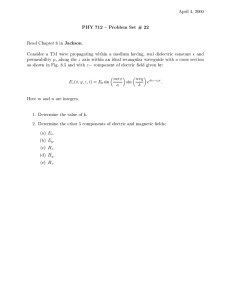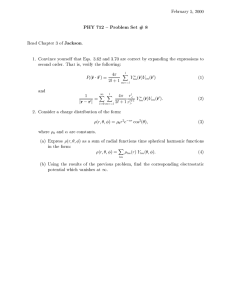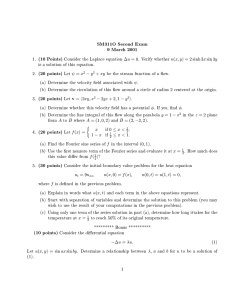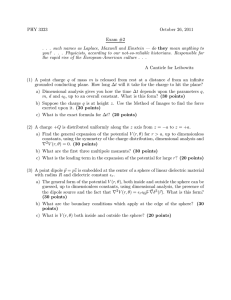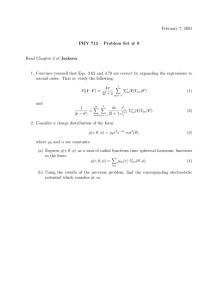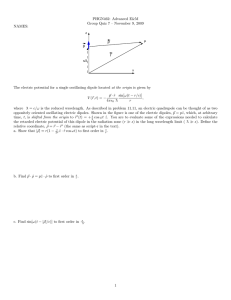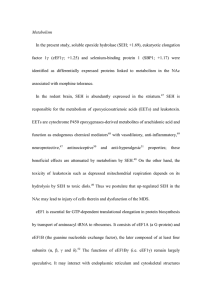F ebruary 27, 2000
advertisement
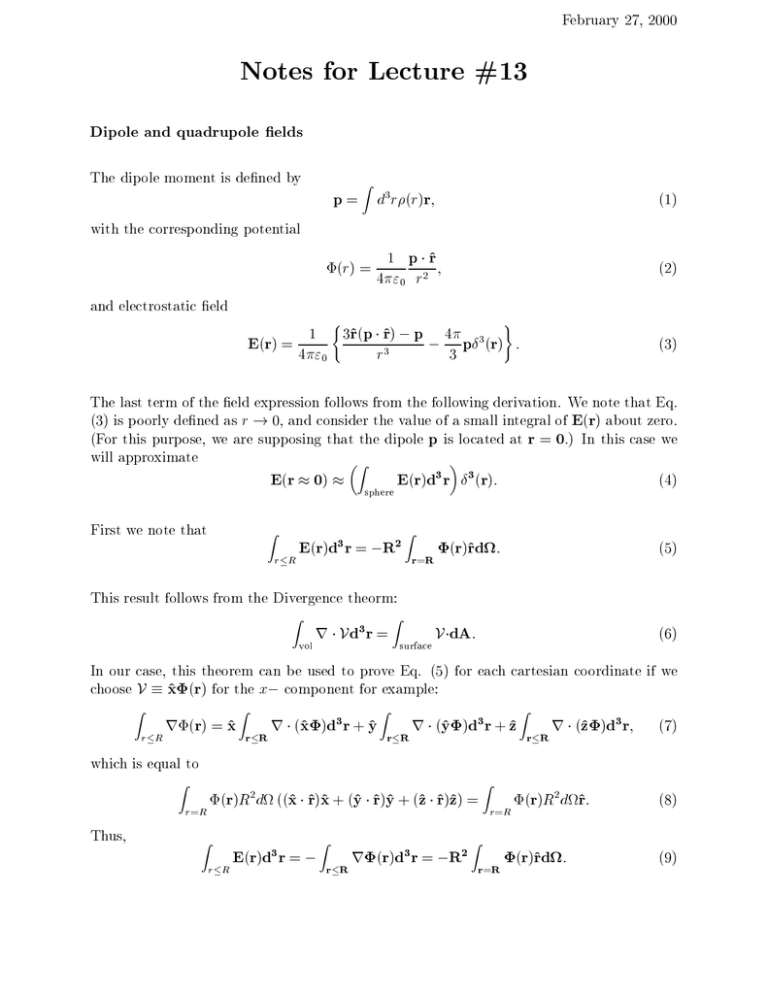
February 27, 2000 Notes for Lecture #13 Dipole and quadrupole elds The dipole moment is dened by p= with the corresponding potential Z ( )r; d3 r r (1) 1 p ^r ; (r) = 4" r2 (2) 0 and electrostatic eld ( 1 3^r(p ^r) p E(r) = 4" r3 0 ) 4 pÆ3(r) 3 (3) : The last term of the eld expression follows from the following derivation. We note that Eq. (3) is poorly dened as r ! 0, and consider the value of a small integral of E(r) about zero. (For this purpose, we are supposing that the dipole p is located at r = 0.) In this case we will approximate Z 3 E(r 0) E(r)d r Æ3(r): (4) sphere First we note that Z r R E(r)d r = R 3 2 Z r=R (r)^rd : (5) VdA: (6) This result follows from the Divergence theorm: Z vol r Vd r = 3 Z surface In our case, this theorem can be used to prove Eq. (5) for each cartesian coordinate if we choose V x^(r) for the x component for example: Z r(r) = x^ rR Z r (x^)d3r + y^ rR Z r (y^)d3r + ^z rR which is equal to Z Thus, r=R (r)R2d ((x^ ^r)x^ + (y^ ^r)y^ + (^z ^r)^z) = Z E (r)d3 r = rR Z r (r)d3r = R2 rR Z r=R Z r=R Z rR r (^z)d3r; (r)R2d ^r: (r)^rd : (7) (8) (9) Now, we notice that the electrostatic potential can be determined from the charge density (r) according to: Z 1 (r) = 4 0 d3 r 0 (r0) = 1 X 4 Z jr r0j 40 lm 2l + 1 d3 r 0 (r0 ) l r< l+1 Ylm r> (^r)Ylm(r^0): (10) We also note that the unit vector can be written in terms of spherical harmonic functions: ( ^ + sin() sin()y^ + cos()^z q ) cos()x ^r = sin( 4 Y (^r) x^p+y^ + Y11 (^r) x^p y^ + Y10 (^r)^z 1 1 3 2 2 (11) Therefore, when we evaluate the integral over solid angle in Eq. (5), only the l = 1 term contributes and the eect of the integration reduced to the expression: R2 Z 1 4R (r)^rd = 4 r =R 0 3 2 Z d3r0(r0) rr<2 r^0: > (12) The choice of r< and r> is a choice between the integration variable r0 and the sphere radius R. If the sphere encloses the charge distribution (r0 ), then r< = r 0 and r> = R so that Eq. (12) becomes R2 Z 4 R2 1 1 (r)^rd = 4 3 R2 d3r0(r0)r0r^0 3p" : r=R 0 0 Z (13)
